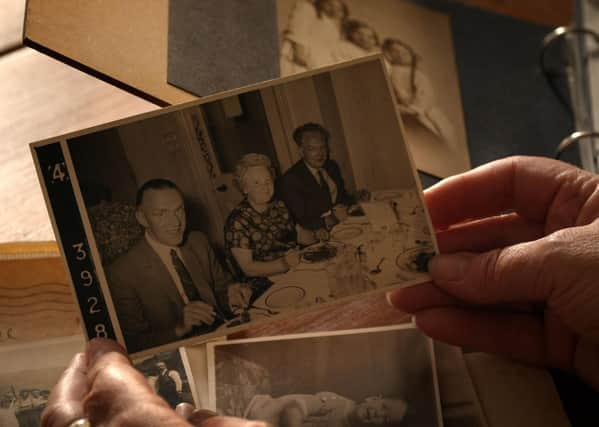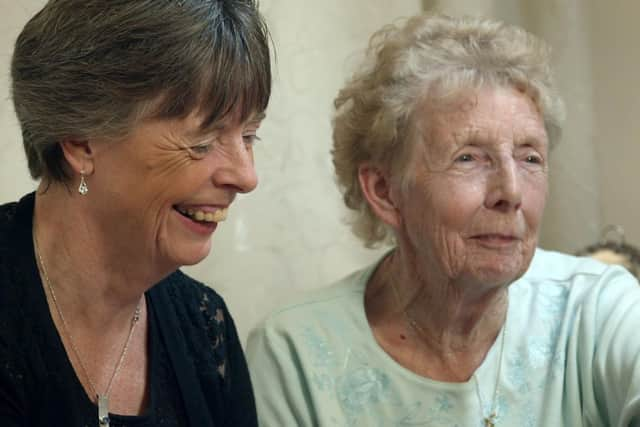My part in exposing Harold Shipman’s Yorkshire killings - Peter Devine


As a reporter at the Todmorden News, from the time of Shipman’s arrest in Hyde in 1998, I pondered the unlikely possibility that he might have started his killing in Todmorden where he spent 19 months as a junior practice doctor.
He lost his job in the town after being convicted of obtaining the drug pethidine (to which he was addicted) by deception and forging prescriptions but was not struck off by the General Medical Council and became a GP in Hyde two years later.


Advertisement
Hide AdAdvertisement
Hide AdShortly after the Todmorden News published an appeal in 1998, there then came a visit from Greater Manchester Police detectives, who were asking if any former patients or friends who had known “Fred” as he was affectionately known, had come forward.
I asked the detectives why they were in town and they revealed it was because it was in connection with a complaint into the death of a premature baby born at home in Todmorden. The parents blamed Shipman, who was at their home, for the death, saying he hadn’t bothered to have him admitted into hospital for emergency treatment.
Todmordians nearly always marked the passing of loved ones with a piece in the local newspaper and for me that seemed like the best place to start for further investigation.
After discussions with my editor and the deputy editor, Sheila Tordoff and John Greenwood, I decided to use our back issues of the Todmorden News to at least work out how many people might have died while he was in town between March 1974 and the end of September 1975.


Advertisement
Hide AdAdvertisement
Hide AdI started extracting every death which had occurred over the 19-month period Shipman was in town – approximately March 1974 to the end of September 1975 – and by doing the same with the period before he arrived and departed as a comparator was able to build the total numbers of people dying.
While it didn’t prove anything against Shipman, the death total showed a large spike in excess deaths over the period he worked in town.
After his conviction for 15 murders and one of forgery in 2000, I found an initial police investigation into possible deaths in Todmorden wanting after discovering it had concluded there were less deaths in Todmorden while Shipman was there.
When I looked further, I found that police had only taken death totals from two registration districts of Todmorden and Halifax but failed to check the other two, namely Rochdale and Burnley.
Advertisement
Hide AdAdvertisement
Hide AdThe next step was to find out how many of these deaths Shipman had been involved with. I approached the Todmorden registrar with my death lists and asked if I could be provided with the death certificates. This was rejected and I was told I would have to buy several hundred if I wanted to know.
I decided to call their bluff and submitted a long list, which included at least 100 names. It was at that point that common sense won the day and I was issued with only the certificates Shipman had signed.
I managed to establish that Shipman had signed 22 death certificates in Todmorden, a large number indeed for any junior doctor starting out.
But what sent a shiver down my spine was that eight of them had been signed over a five-day period in 1975, with three of them signed on the same day of January 21.
Advertisement
Hide AdAdvertisement
Hide AdI spoke with the relatives of each of the three people and they all confirmed that Shipman had been present at their bedside when they died.
After his conviction in 2000 and supported by the Calder Valley MP Christine McCafferty, the Todmorden News asked for an investigation in the town but Ms MCafferty’s Labour Party wanted it to be held in private.
I spoke with Peter Wagstaff, whose mother was one of the 15 victims of Shipman and discovered that Labour MPs had been warned against speaking up for a public inquiry. I promised Mr Wagstaff I would do my best to at least ask Ms McCafferty to break ranks and call for one, which she did at a press conference I had organised at Todmorden Old Hall.
The results of my investigation were subsequently passed on to Professor Richard Baker who was carrying out a clinical analysis for a public inquiry into Shipman’s killings. In January 2001, he published his findings, which included the decision to widen the investigation from Hyde to Todmorden. My analysis was included in his report - it was vindication that the efforts that I and others had put into widening the probe were wholly justified.
Advertisement
Hide AdAdvertisement
Hide AdOne area that still concerned about was the lack of clarity concerning inquests. As many will know, if a death goes to an inquest the doctor involved does not sign the death certificate, that is left for the coroner.
The following month, I appeared at the opening of the Shipman Inquiry in Manchester and asked Dame Janet Smith if she could ensure that all deaths including inquests would be investigated. She gave me a verbal assurance and Detective Superintendent Chris Gregg, the head of West Yorkshire CID, was sent to Todmorden carry out the wide ranging and thorough investigation.
His investigation found that a further 14 deaths in Todmorden had gone to inquest involving Shipman and that brought the overall total of deaths involving Shipman up to 36.
In May 2001, I was invited with Ms McCafferty to attend some of the police questioning of Shipman at Halifax Police Station, where we saw him questioned on the deaths of people in Todmorden, he refused to answer any questions and simply turned his chair to the wall.
Advertisement
Hide AdAdvertisement
Hide AdThe Shipman Inquiry ultimately investigated more than 30 deaths in Todmorden and ruled that 70-year-old Eva Lyons was murdered, while in the case of a further six people there was a suspicion of unlawful killing and for five other patients there was insufficient evidence to make a decision.
The inquiry’s recommendations called for improved training of coroners and more stringent controls on drugs, which, as a result now provide limited access under new
regulations.
It also recommended a shake-up of the General Medical Council (GMC), which it concluded “was an organisation designed to look after the interests of doctors, not patients”. As a result the GMC moved from a system of self-regulation to professional regulation.
Although implementation of new regulations are there to provide the general public with some assurances, it still comes down to human failings in the system.
Advertisement
Hide AdAdvertisement
Hide AdIn a submission to the Shipman Inquiry, I requested that there ought to be a public document at a local library or online in which the name of the person, their age, what they died from, and who was their doctor be included. That was either ignored or did not meet the remit of the inquiry.
God only knows how many more people might have died at the hands of Shipman if he had not been caught committing forgery in 1998, a serious crime he was almost completely exonerated and forgiven for after his trial in 1976.
The price of professional forgiveness led to heartbreak on an unprecedented scale that families across the country are still living with more than 20 years later.
Peter Devine is a freelance journalist who was previously senior reporter for the Todmorden News.
Support The Yorkshire Post and become a subscriber today.
Advertisement
Hide AdAdvertisement
Hide AdYour subscription will help us to continue to bring quality news to the people of Yorkshire. In return, you’ll see fewer ads on site, get free access to our app and receive exclusive members-only offers.
So, please - if you can - pay for our work. Just £5 per month is the starting point. If you think that which we are trying to achieve is worth more, you can pay us what you think we are worth. By doing so, you will be investing in something that is becoming increasingly rare. Independent journalism that cares less about right and left and more about right and wrong. Journalism you can trust.
Thank you
James Mitchinson
Comment Guidelines
National World encourages reader discussion on our stories. User feedback, insights and back-and-forth exchanges add a rich layer of context to reporting. Please review our Community Guidelines before commenting.